Saltwater intrusion in the Mekong Delta is higher than many years, in some places 80 - 90 km
The National Center for Hydro-Meteorological Forecasting said that currently, the southwestern region is popular with no rain and sunny days, especially in the provinces of An Giang, Vinh Long and Ben Tre, there are places with hot weather. The highest temperature is commonly 31 - 34 degrees Celsius, in some places it is over 35 degrees Celsius.
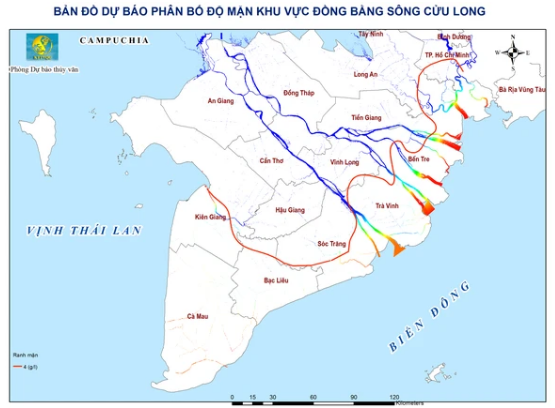
Salinity distribution map from 1 - 10.3 (NATIONAL CENTER FOR HYDROMETEROLOGICAL FORECASTS)
Water levels at stations on the main stream of the Mekong River change slowly with a decreasing trend and are 0.15 - 1.5 m lower than the average for many years.
Water levels on the Tien and Hau rivers fluctuate with the tide. The highest water level of the week in Tan Chau town (An Giang) is 1.31 m (March 2), in Chau Doc (An Giang) 1.52 m (March 2), 0.05 - 0.15 m higher than the average for the same period.
The tidal water level at Vung Tau station tends to gradually decrease and increase again on weekends. The highest water level of the week at Vung Tau station is 4 m (March 10).
It is forecasted that from March 11 to 20, the Southwest region will continue to have little rain, many sunny days, and some places will be at the threshold of hot weather. The highest temperature here is commonly from 31 - 34 degrees Celsius, in some places it is over 35 degrees Celsius.
Water levels on the Tien and Hau rivers change slowly with the tide with a gradual upward trend. The highest water level of the week at Tan Chau is 1.65 m, at Chau Doc it is 1.85 m, at a level 0.35 - 0.5 m higher than the average for the same period.
From March 11 - 13, the water level at Vung Tau station fluctuated at a high level, the peak tide during this period fluctuated between 405 - 415 cm, the time of peak tide is mainly around 0 to 4 a.m. and 13 to 5 p.m. every day. From March 14 - 20, the water level at Vung Tau station tends to gradually decrease, fluctuating between 350 - 390 cm.
From March 11 - 20, the water level at Rach Gia station fluctuated at a high level, the peak tide during this period fluctuated between 25 - 35 cm, appearing from 19 to 24 hours daily.
Saltwater intrusion in the Mekong Delta from March 11 to 20 gradually increased until mid-week then gradually decreased. The highest salinity at the stations is higher than the highest salinity in March 2023.
Specifically, the Vam Co Dong and Vam Co Tay rivers have a salinity intrusion range of 80 - 90 km; Cua Tieu and Cua Dai rivers have a salinity intrusion range of 60 - 67 km; Ham Luong River has a saltwater intrusion range of 57 - 65 km; Co Chien River has a saltwater intrusion range of 50 - 60 km; Hau River has a salinity intrusion range of 55 - 60 km; Cai Lon River's saltwater intrusion range is 45 - 52 km.
The meteorological agency warns that localities need to take advantage of storing fresh water to serve agriculture and people's livelihood. Saltwater intrusion in the Mekong Delta in the dry season of 2023 - 2024 is higher than the average, but not as severe as the dry season of 2015 - 2016 and 2019 - 2020.
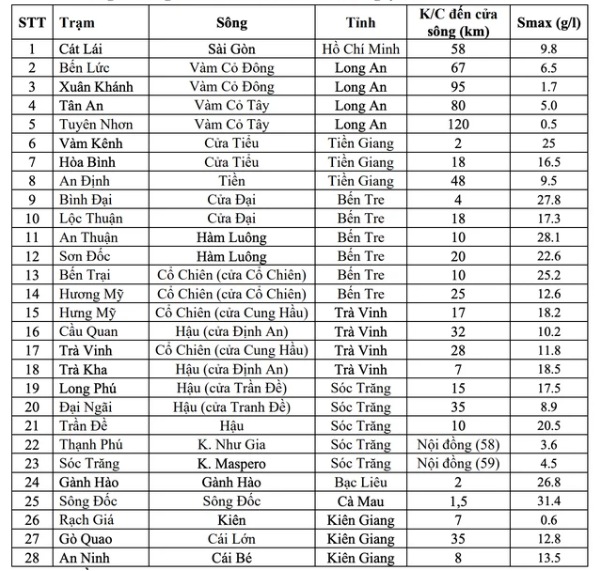
Forecast map of highest salinity distribution from March 11 - 20 (NATIONAL CENTER FOR HYDROMETEROLOGICAL FORECASTS)
Increased saltwater intrusion events in the Mekong River estuary are likely to concentrate in March (from March 10 - 14, from March 24 - 28); Vam Co and Cai Lon rivers in March - April. The situation of saltwater intrusion depends on water sources from the upstream of the Mekong River, high tides and will fluctuate in the coming time.
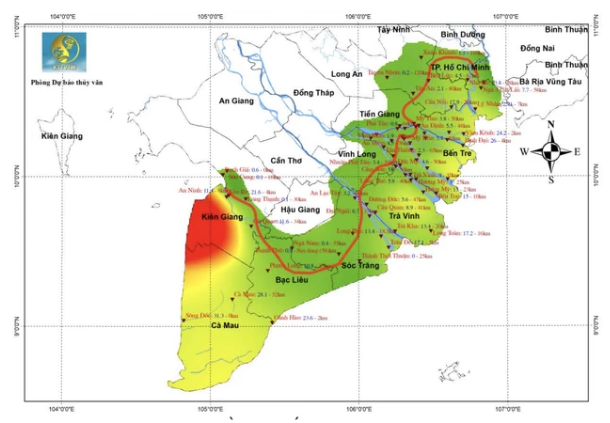
The warning level of natural disaster risk due to saltwater intrusion in the Mekong Delta is level 2.
Previously, on March 8, Prime Minister Pham Minh Chinh signed Official Dispatch No. 19/CD-TTg requesting relevant ministries and localities to focus on responding to peak saltwater intrusion in the Mekong Delta.
The Prime Minister requested ministers and Chairmen of People's Committees of provinces and centrally run cities in the Mekong Delta region to continue to closely monitor the situation and implement the Prime Minister's direction in Official Telegram No. 04/CT-TTg dated January 15 on proactively responding to the risks of drought, water shortage, and saltwater intrusion, especially implementing drastic, timely, and effective tasks.
Proactively allocate local resources, mobilize on-site forces and means, immediately deploy necessary measures appropriate to the specific situation in the locality to ensure fresh water sources for production and daily life of the people, be determined not to let people lack domestic water or have to use domestic water of substandard quality.
Organize close monitoring, fully and promptly grasp information on water shortage situation, saltwater intrusion in each area in the area to proactively deploy specific response measures appropriate to the actual situation in the locality, according to the direction and guidance of the Ministry of Agriculture and Rural Development.
The Minister of Natural Resources and Environment focuses on directing and closely monitoring water resource developments, forecasting and providing timely information on the water resource situation on the Mekong River and saltwater intrusion in the Mekong Delta, so that the authorities, localities and people know and proactively implement measures to prevent and respond to the risk of water shortage for production and daily life, saltwater intrusion, and prevent passive occurrence, surprise.
Cre: Thanh Niên








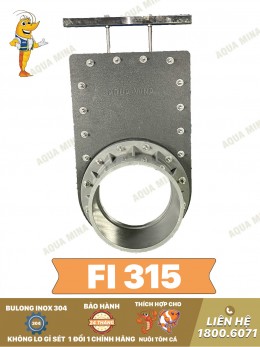
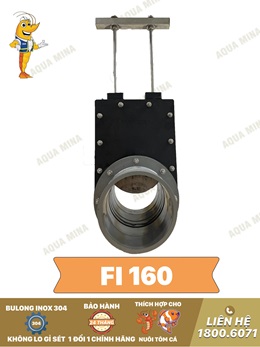


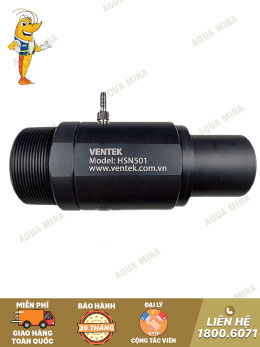
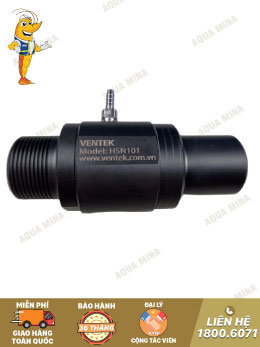

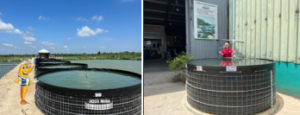
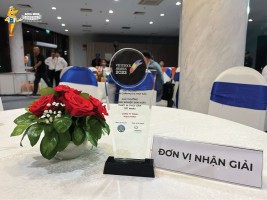
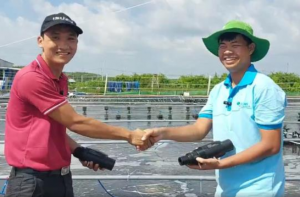
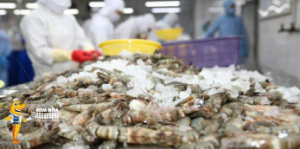
.jpg)